Firefighters have been battling some of the largest fires 🔥in California’s history in recent weeks. A fleet of specially equipped firefighting aircraft have been helping fire crews on the ground. Example from Aug. 22 👇
(THREAD)
(THREAD)
#CalFire has its own fleet of aircraft that can reach most fires within about 20 minutes. The three main components are tactical planes, airtankers and helicopters. All have specific roles but work together as a unit to combat fires. 
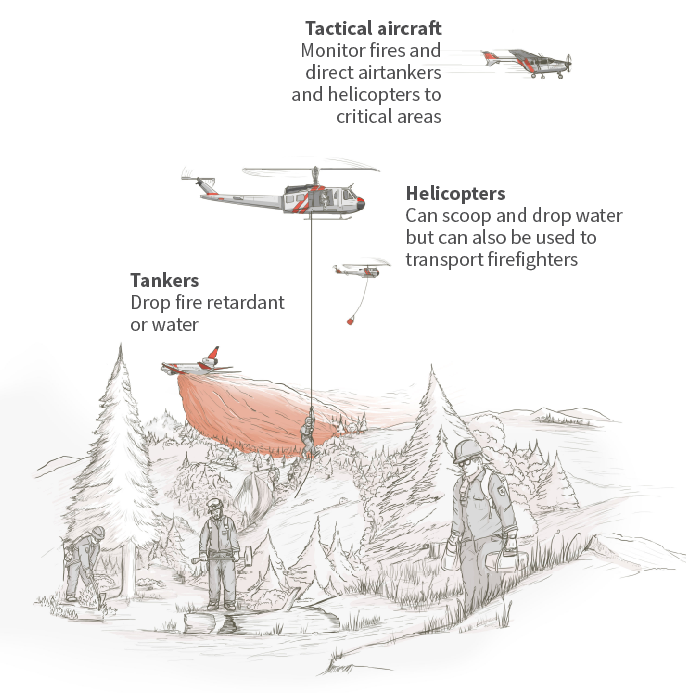
Tactical aircraft are used in aerial command and control roles in fighting wildfires, providing coordination with commanders on the ground and other aircraft in the sky. Most of Cal Fire’s tactical planes are North American Rockwell OV-10 aircraft. 
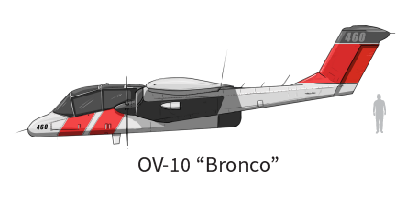
This map shows Cal Fire OV-10 flights around the LNU complex fires on the afternoon of August 22. Flight path data from @flightradar24 shows how five planes covered the area, staying in the air for hours 
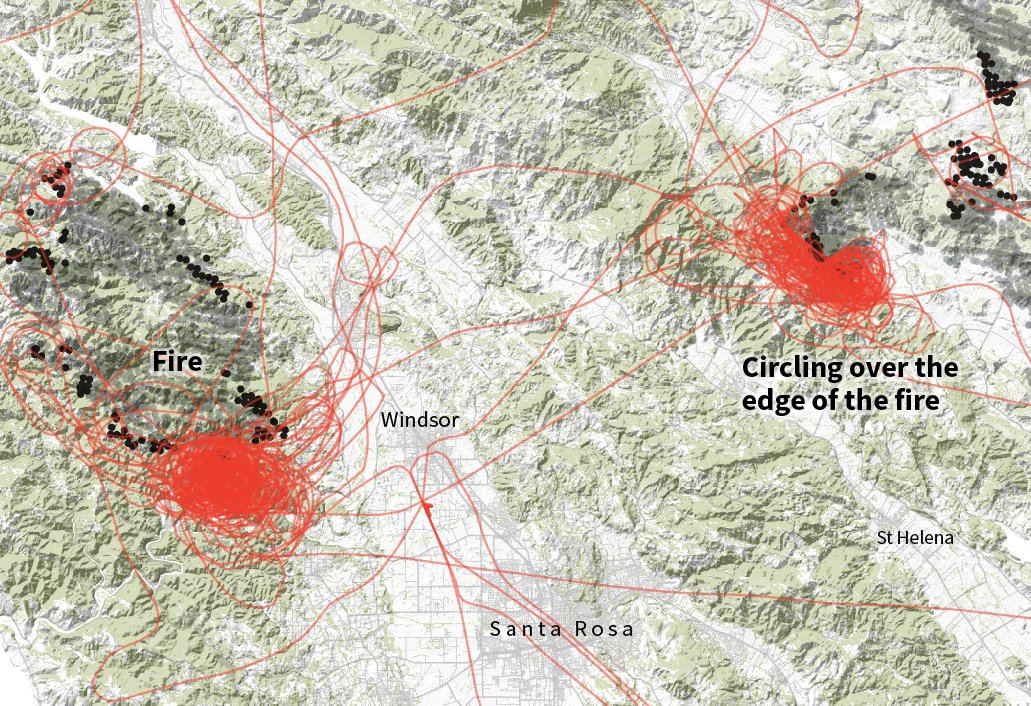
The workhorse of Cal Fire’s fleet is the Grumman S-2T tanker. The aircraft can hold about 4,500 liters (1,200 gallons) of fire retardant that it can drop in the path of fires. The ex-military aircraft were used to track submarines until the 1970s. 
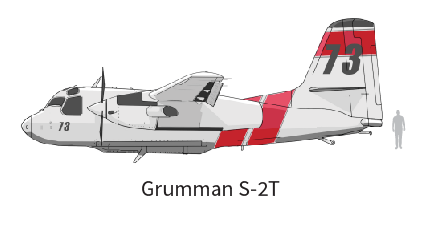
The Grumman S-2T has a fill spout in the tail, allowing it to be “hot loaded” with retardant without having to shut off its engines. This means it can be back in the air within minutes. 
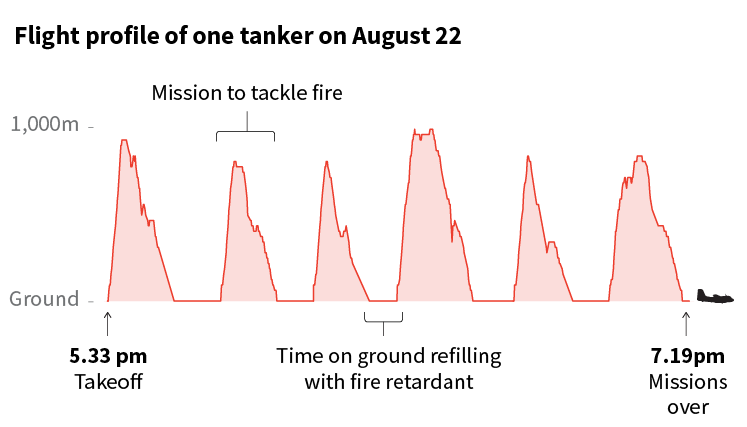
Flight path data, again from August 22 around the LNU Lightening Complex fires, shows how the tankers repeatedly loop around to the edge of the fire before returning to land at the air base. 
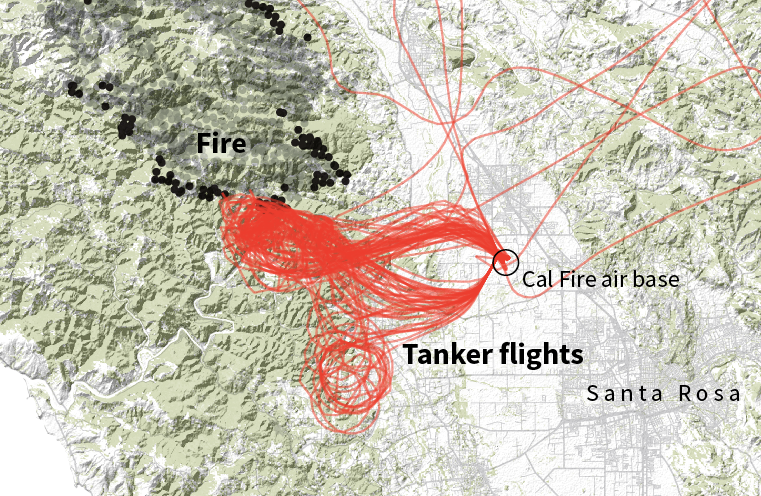
Tankers don’t usually drop retardant directly on the fire itself. Instead, they drop in front of a fire, directing its course or slowing its advance, giving ground crews a chance to control or extinguish it. 🛰️ Satellite image @planetlabs 
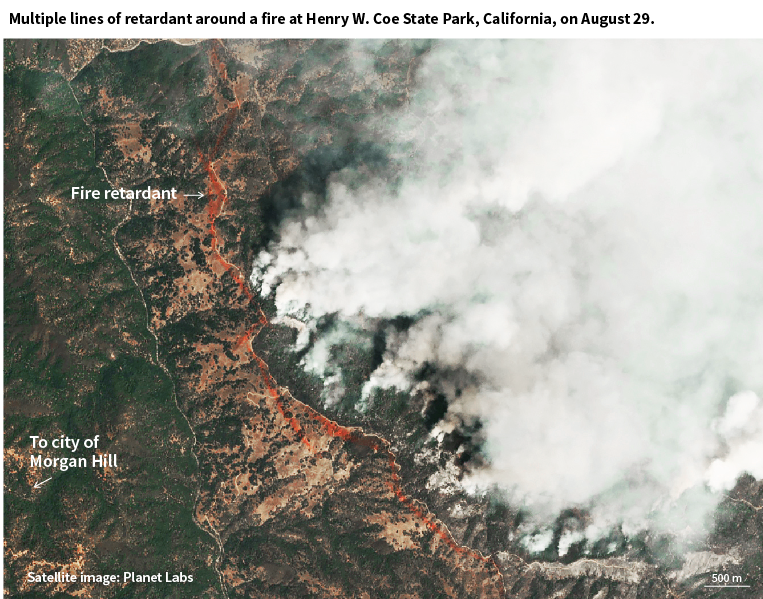
Cal Fire can also employ contractors to bring in larger air tankers to help suppress major fires. The aircraft are usually passenger jets that have been converted to tankers.
Here are some that have helped fight the fires in California recently.
Here are some that have helped fight the fires in California recently.

The 747 supertanker is the largest firefighting aircraft in the world and has also assisted in battling the fires. A pressurised system can dump about 68,000 liters (18,000 gallons) of retardant in a matter of seconds. 
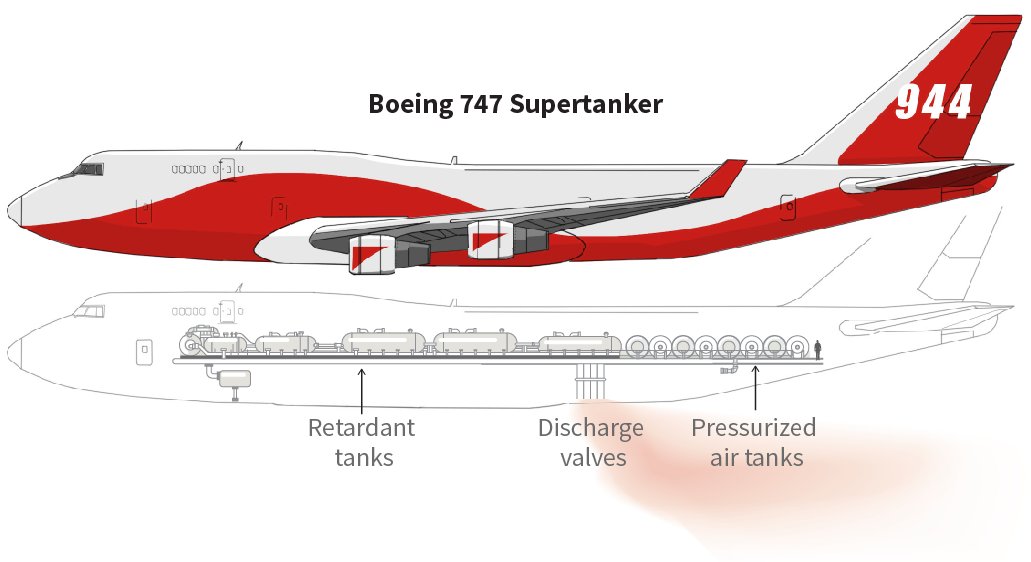
Some tankers require a “lead” aircraft to guide them in and show exactly where to drop the retardant. Some large tankers come with their own lead aircraft and team, and sometimes Cal Fire’s tactical OV-10s serve as lead aircraft.
Firefighting "Super Scooper" planes refill by descending to the placid waters of bays and lakes and skimming the water’s surface to load their tanks. They then release the water to douse a blaze and repeat the process until they need to refuel. 

According to flight tracking data from FlightRadar24, for example, aircraft number N386AC made two flights and dozens of repeated water scoops to tackle the Woodward fire on August 23. 
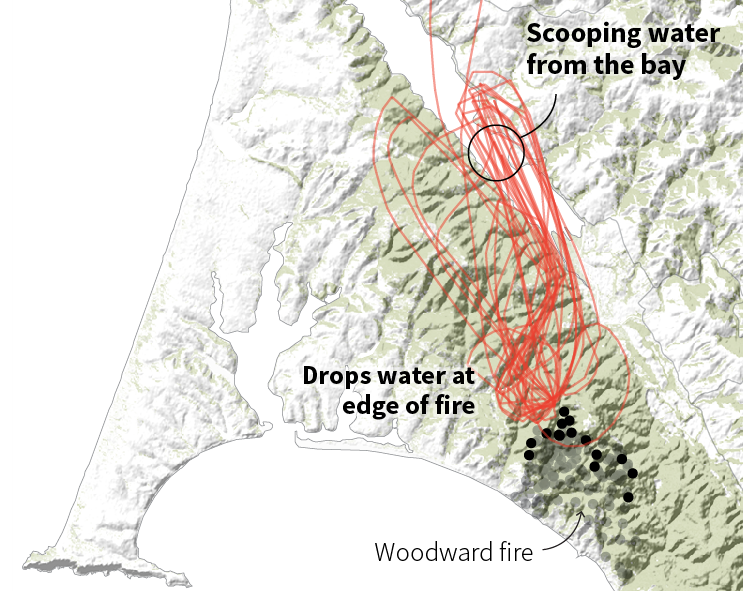
Cal Fire owns 12 Bell UH-1H “Super Huey” helicopters, which can each carry about 1,200 liters (320 gallons) of water in buckets hanging below the aircraft. They can be used for fast initial attacks on smaller wildfires.
To read the full visual story on how California uses dozens of aircraft to battle wildfires 🔥 go here tmsnrt.rs/2GAfhqb
• • •
Missing some Tweet in this thread? You can try to
force a refresh
















